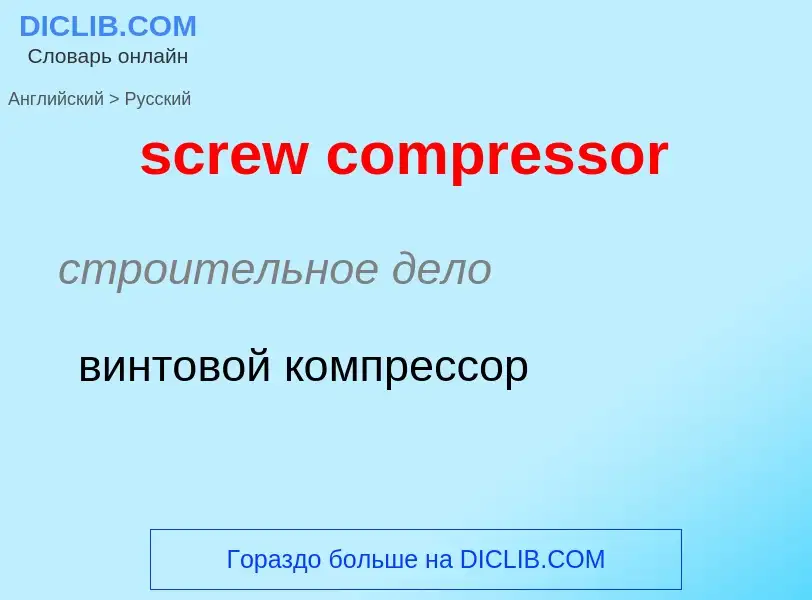Перевод и анализ слов искусственным интеллектом ChatGPT
На этой странице Вы можете получить подробный анализ слова или словосочетания, произведенный с помощью лучшей на сегодняшний день технологии искусственного интеллекта:
- как употребляется слово
- частота употребления
- используется оно чаще в устной или письменной речи
- варианты перевода слова
- примеры употребления (несколько фраз с переводом)
- этимология
screw compressor - перевод на русский
строительное дело
винтовой компрессор
['preʃəraiz]
общая лексика
герметизировать
герметичный
создавать давление
глагол
общая лексика
оказывать давление
нажим
оказывать давление, нажим
техника
герметизировать
приспосабливать для работы на больших высотах
поддерживать повышенное давление
редкое выражение
pressure-cook
[kəm'presə]
общая лексика
мышца-сжиматель
компрессор
устройство, сжимающее динамический диапазон (разница между самым громким и самым тихим звуком, выраженная в децибелах) звукового сигнала. Компрессор увеличивает громкость на выходе, если уровень на входе ниже заданного значения и, наоборот, уменьшает громкость, если уровень выше заданного
система сжатия данных
техника
компрессорный
антоним
существительное
анатомия
сжимающая мышца
медицина
жом
компрессорий
техника
компрессор
морской термин
палубный стопор
нефтегазовая промышленность
компрессорная станция
Определение
Википедия
A rotary-screw compressor is a type of gas compressor, such as an air compressor, that uses a rotary-type positive-displacement mechanism. These compressors are common in industrial applications and replace more traditional piston compressors where larger volumes of compressed gas are needed, e.g. for large refrigeration cycles such as chillers, or for compressed air systems to operate air-driven tools such as jackhammers and impact wrenches. For smaller rotor sizes the inherent leakage in the rotors becomes much more significant, leading to this type of mechanism being less suitable for smaller compressors than piston compressors.
The screw compressor is identical to the screw pump except that the pockets of trapped material get progressively smaller along the screw, thus compressing the material held within the pockets. Thus the screw of a screw compressor is asymmetrical along its length, while a screw pump is symmetrical all the way.
The gas compression process of a rotary screw is a continuous sweeping motion, so there is very little pulsation or surging of flow, as occurs with piston compressors. This also allows screw compressors to be significantly quieter and produce much less vibration than piston compressors, even at large sizes, and produces some benefits in efficiency.













